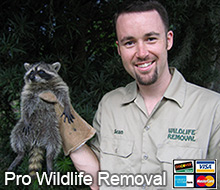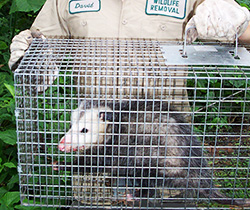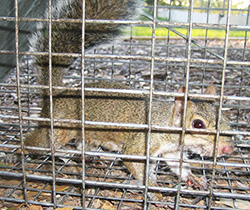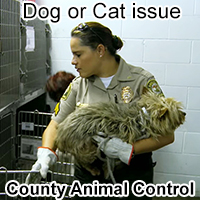- northeastmn@aaanimalcontrol.com
Call 24/7 for a free quote:
218-209-4008
Northeast MN Wildlife Control / Minnesota Animal Removal
Lakes Area Wildlife Control - Animal Pest Control in Northeast MN, MN. Call us: 218-209-4008

- Noises in Your Attic?
- Unwanted Wildlife?
- Bird or Bat Problem?
- Rodent Infestation?
- We Can Solve It!
Please, no calls about DOG or CAT problems. Call animal services: (218) 829-0991?.
 We service a very large range, including these areas: Lake County, St Loius County, Itasca County and in these counties the main cities would be Grand Rapids, Duluth, Ely, Vermillion, International Falls, etc.
We service a very large range, including these areas: Lake County, St Loius County, Itasca County and in these counties the main cities would be Grand Rapids, Duluth, Ely, Vermillion, International Falls, etc.
 Lakes Area Wildlife Control provides professional wildlife control for both residential & commercial customers in the
city of Northeast MN in Minnesota. We offer custom animal control solutions for almost any type of wildlife problem, whether
it be the noises of squirrels running through the attic, a colony of bats living in a building, animals digging in your yard, or
the destructive behavior of a raccoon or other critter, we have the experience and the tools to quickly and professionally
solve your problem. For a consultation and price quote, give us a call at 218-209-4008
Lakes Area Wildlife Control provides professional wildlife control for both residential & commercial customers in the
city of Northeast MN in Minnesota. We offer custom animal control solutions for almost any type of wildlife problem, whether
it be the noises of squirrels running through the attic, a colony of bats living in a building, animals digging in your yard, or
the destructive behavior of a raccoon or other critter, we have the experience and the tools to quickly and professionally
solve your problem. For a consultation and price quote, give us a call at 218-209-4008
Click here to check our prices updated for year 2024. There are many Northeast MN pest control companies for animals out there, but not all of them are licensed and insured professionals. Make sure that you hire a competent expert for your Northeast MN exterminator of wildlife. At Lakes Area Wildlife Control, we will be courteous and friendly and take the time to answer your questions. Give our Northeast MN trappers at Lakes Area Wildlife Control a call, and we will listen to your problem, and make an appointment to perform an inspection. Feel free to email us at northeastmn@aaanimalcontrol.com
 Resources for free wildlife removal in Northeast MN
Resources for free wildlife removal in Northeast MN
If you can't afford our pro wildlife work, you can try these agencies for free wildlife removal:
Saint Louis County Animal Services: (218) 829-0991?
Minnesota Wildlife Commission: 651-296-6157
Northeast MN Police Department: 612-673-5702
These agencies will only help with certain types of wildlife problems, and they are not always consistent. If you want a high quality of
help done right, call our company.
 Minnesota is full of wildlife, including snakes, squirrels, raccoons, skunks, opossums, and more. Wildlife removal is a complex field. I
recommend professional Northeast MN wildlife control services if you want to solve a critter problem legally and correctly. For example, we specialize in animals in the attic, which have broken into the house
and almost always have a nest of baby animals. It is necessary to perform correct
preventative repairs to keep pest animals a out of your house for good. We perform full building inspection, do the
the repairs and we also offer attic decontamination if necessary. Rats and mice love to live in attics, and can chew wires or leave droppings. Some Northeast MN animals
frequently enter homes, and correct removal is not a simple task.
Minnesota is full of wildlife, including snakes, squirrels, raccoons, skunks, opossums, and more. Wildlife removal is a complex field. I
recommend professional Northeast MN wildlife control services if you want to solve a critter problem legally and correctly. For example, we specialize in animals in the attic, which have broken into the house
and almost always have a nest of baby animals. It is necessary to perform correct
preventative repairs to keep pest animals a out of your house for good. We perform full building inspection, do the
the repairs and we also offer attic decontamination if necessary. Rats and mice love to live in attics, and can chew wires or leave droppings. Some Northeast MN animals
frequently enter homes, and correct removal is not a simple task.
 DOG or CAT: If you need assistance with a domestic animal, such as a dog or a cat, you need to call your local
Saint Louis County Animal Control
for assistance. They can help you out with issues such as stray dogs, stray cats, vaccinations, licenses,
pet adoption, lost pets, and more. If you have a wildlife problem, you can try calling the Saint Louis County animal control, and see what they have to
say, but they will certainly not help you with a complex wildlife problem such as critters in your attic. They are a free government agency that
helps with dog and cat issues only.
DOG or CAT: If you need assistance with a domestic animal, such as a dog or a cat, you need to call your local
Saint Louis County Animal Control
for assistance. They can help you out with issues such as stray dogs, stray cats, vaccinations, licenses,
pet adoption, lost pets, and more. If you have a wildlife problem, you can try calling the Saint Louis County animal control, and see what they have to
say, but they will certainly not help you with a complex wildlife problem such as critters in your attic. They are a free government agency that
helps with dog and cat issues only.
Saint Louis County Animal Services: (218) 829-0991?
Northeast MN Wildlife Tip:
How to catch a raccoon in the attic: Raccoons love to find safe, dry and dark places to make their home which is why your attic may be their prime target. Using poisons are never a good idea as not only is it inhuman to the animals, but other non-targeted animals and children can become sick or perish as well. Trapping is the preferred method; however, remember that these little critters are sneaky, intelligent and very flexible. Any holes or openings that are in the attic will need to be sealed and traps should be placed to capture the raccoon. It is important to remember that the raccoons will likely have babies as well which means trapping all of the animals will be a difficult task without the help of a professional.
Northeast MN, MN Animal Control News Clip:
All about Weasels - Weasels are mammals, which are found in the Mustelidae family. They are extremely active predators, which have long, slender legs. They usually have a red or brown upper coat and their bellies are typically white in color. In some species, the animals may turn wholly white in the winter. The length of weasels varies and has been found to be between twelve and forty five centimeters. Their long, slender bodies enable them to follow their prey into burrows. The animals have a reputation of being clever and guile. They have tails whose length ranges between 22 and 33 centimeters. They have been known to feed on small mammals, and are often considered vermin. This is because; they have been seen to feed on poultry and rabbits. It should be noted that weasels can be found in most parts of the world, except for Australia, Antarctica and the surrounding islands.
Terminology - The term weasel was initially used to refer to only one species of the genus, which was the least weasel. However, the word was later extended to cover several other species of the genus. The name weasel is thought to come from the Anglo-Saxon root Weatsop, which means vicious blood thirsty animal. Out of the seventeen species in the genus Mustela, ten have the word weasel in their names.
Cultural meaning - There are so many cultural meanings that have been attached to weasels, and it is quite impossible to exhaust all of them, especially since there are so many cultures in the world today. However, they have often been regarded as a sign of bad luck and evil. In Greek culture, the animal was thought to be an unhappy bride who was transformed into a weasel and consequently delights in destroying wedding dresses. The animal is, therefore, regarded as evil and bad luck for weddings. In North America, the animal is also regarded as a bad sign and crossing paths with it is thought to mean a speedy death.
Behavior - The animals are known to mate between April and July and they usually have a gestation period of 34 to 37 days. The average litter size is usually six kits, which reach maturity sexually at either three or four months. It should be noted that male weasels are capable of mating during their first year of life. The Kits usually weigh between 1.5 and 4.5 grams at birth. Also, essential to note is that it is the sole responsibility of the female to raise her kits. At birth, the kits are pink, deaf and blind, and can lactate up to twelve weeks. They usually get a white coat of fur after four days and at ten days, the margin between the dark upper parts and the light under parts is visible. Their eyes and ears usually open between three to four weeks of being born and by the time they get to eight weeks, they have developed a killer instinct. The female is separated from her kits when they reach nine to twelve weeks.
We are Northeast MN wildlife management experts, and are familiar with all the pest animals, including all species of Minnesota snakes and
bats. We at Lakes Area Wildlife Control are the best among Northeast MN nuisance wildlife companies and can solve all animal damage issues. Our wildlife operators are skilled at bird control and
bat removal, and would be happy to serve your Northeast MN bat control or pigeon and bird control needs with a professional solution. Opossums, skunks, moles, and other animals
that can damage your lawn - we are the exterminators who can capture and remove them. Our specialty is removal of animals in homes such as raccoons in the attic or squirrels in the attic.
Our professional pest management of wildlife and animals can solve all of your Northeast MN
critter capture and control needs. Give us a call at 218-209-4008 for a price quote and more information.
If you have any questions about a wildlife problem in Northeast MN, or wildlife removal in Saint Louis County, please give Lakes Area Wildlife Control a call at 218-209-4008, and we will listen to your problem, give you a price quote, and
schedule an appointment, usually same day or next day, to solve the problem.


















